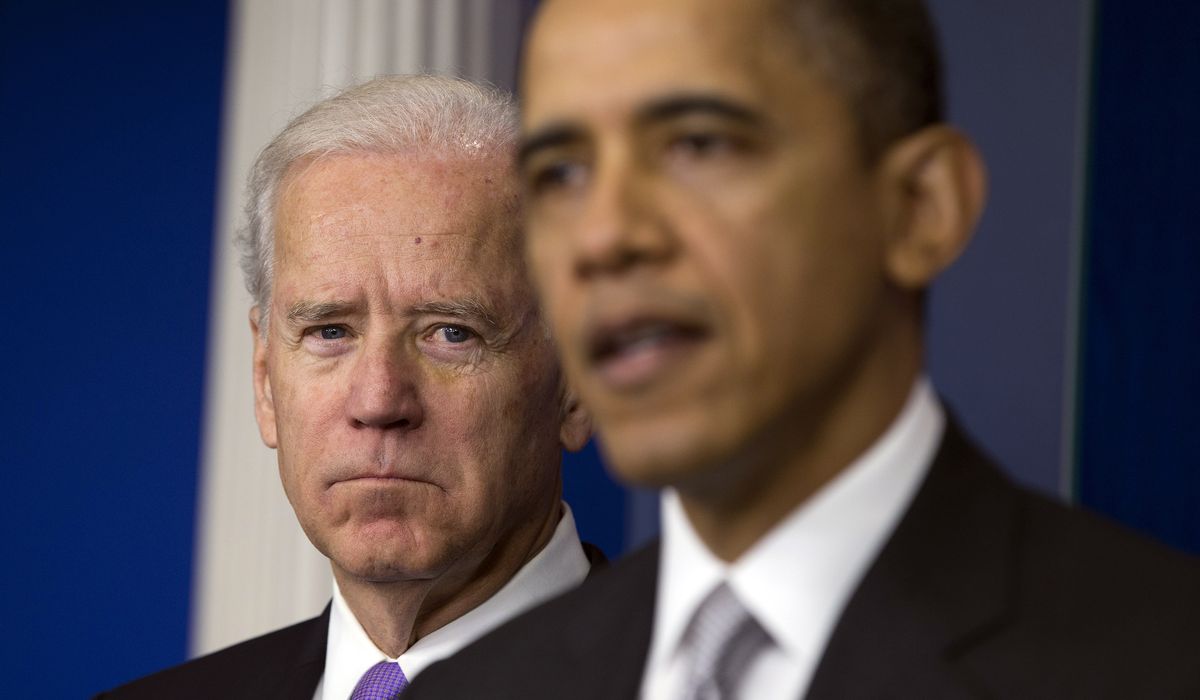


If the government can’t even cut its digital footprint, how can it be expected to cut something important — like the budget?
In 2011, President Obama was pressured by tea party Republicans to show he was serious about reining in the size of government. He figured he would start with a pledge to halve the number of federal .gov websites. He assigned the task to his vice president, “Sheriff Joe” Biden.
They succeeded in slashing about 25% of federal domains but never neared 50%. Since then, the government has added to its stockpile of websites.
President-elect Donald Trump is plotting another assault on the bloated budget. He has assigned maverick businessmen Elon Musk and Vivek Ramaswamy to lead the Department of Government Efficiency, a commission to put Uncle Sam on a diet.
“Aiming to cut the number of government websites in half, but not the number of agencies hosting those sites, was a weird metric,” said John Hart, CEO of Open the Books, a spending watchdog. “We’re confident DOGE will be proposing ways to seriously scale back the number of actual agencies, not merely agency websites.”
He also offered a dig at Mr. Biden.
“Even in his prime, ‘Sheriff’ Joe Biden made Barney Fife look like Eliot Ness,” Mr. Hart quipped.
When Mr. Obama proposed the website cuts, the White House struggled to explain why. The answer boiled down to symbolism.
Federal websites, like the rest of the government, take on a life of their own. Agencies seem to view websites as another yardstick of power, similar to office space and budget size. The more they have, the thinking goes, the more valuable they are.
That might explain why the Commerce Department has 66 domains registered. The Energy Department has 65.
The Department of Health and Human Services has 131, including cancer.gov, HIV.gov, menopause.gov, stopbullying.gov, girlshealth.gov and youth.gov.
Doubling up is common. SecretService.gov and USSS.gov are on the same page.
That’s known as a “redirect.”
The Corporation for National and Community Service takes the task to an extreme. It has registered ClimateCorp.gov, ClimateCorps.gov, ClimateCore.gov and AmericanClimateCorps.gov — all of which redirect back to acc.gov.
HHS, meanwhile, offers seven versions of vaccines.gov — or vacunas.gov, the Spanish-language version.
When Mr. Obama made his website-cutting pledge in June 2011, the federal total was about 1,760. Mr. Biden cut the figure to 1,478 a year later and 1,335 in late 2016 as Mr. Obama prepared to leave office.
That figure ticked back up to 1,373 as of early last month.
Of those, 1,226 belong to the Executive Branch, 25 belong to the federal courts and 123 to Congress.
The list constantly changes as the government drops some sites and creates others as necessary.
Gone are the likes of CentennialOfFlight.gov, which celebrated the Wright brothers’ 1903 flight; BestBonesForever.gov, a 2009 effort to encourage girls ages 9-14 to improve their bone health; and BAM.gov, another site aimed at children’s health.
Also gone is Change.gov, the website Mr. Obama created to capture the zeitgeist of his historic 2008 presidential campaign.
The politics of websites can be complicated.
Last year, the Homeland Security Department inaugurated HSI.gov, deciding that the detective branch of U.S. Immigration and Customs Enforcement, known as Homeland Security Investigations, needed its own identity.
The goal was to win over sanctuary cities that didn’t want to cooperate with ICE by convincing them that HSI wasn’t involved in deportation.
Deportation officers, however, felt abandoned.
Homeland Security has also created Together.gov and Juntos.gov, the English and Spanish versions of websites for illegal immigrants involved in family separations under the Trump administration.
The National Archives, meanwhile, has created Declaration250.gov, which celebrates 250 years since the adoption of the Declaration of Independence. It features a countdown to the big kickoff: one year, six months and two days, as of Thursday.
The get.gov website provides .gov websites, which can also be accessed through dotgov.gov.
• Stephen Dinan can be reached at sdinan@washingtontimes.com.
